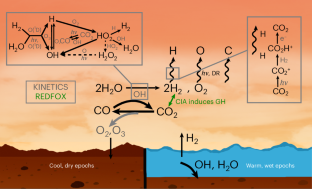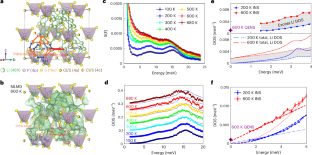2025-01-27 ハーバード大学
<関連情報>
- https://seas.harvard.edu/news/2025/01/explaining-persistent-hydrogen-mars-atmosphere
- https://www.nature.com/articles/s41561-024-01626-8
初期火星における周期的な温暖気候は地殻の水和によってもたらされた Episodic warm climates on early Mars primed by crustal hydration
Danica Adams,Markus Scheucher,Renyu Hu,Bethany L. Ehlmann,Trent B. Thomas,Robin Wordsworth,Eva Scheller,Rob Lillis,Kayla Smith,Heike Rauer & Yuk L. Yung
Nature Geoscience Published:15 January 2025
DOI:https://doi.org/10.1038/s41561-024-01626-8

Abstract
Geological records indicate that the surface of ancient Mars harboured substantial volumes of liquid water, a resource gradually diminished by processes such as the chemical alteration of crustal materials by hydration and atmospheric escape. However, how a relatively warm climate existed on early Mars to support liquid water under a fainter young Sun is debated. Greenhouse gases such as H2 in a CO2-rich atmosphere could have contributed to warming through collision-induced absorption, but whether sufficient H2 was available to sustain warming remains unclear. Here we use a combined climate and photochemical model to simulate how atmospheric chemistry on early Mars responded to water–rock reactions and climate variations, as constrained by existing observations. We find that H2 outgassing from crustal hydration and oxidation, supplemented by transient volcanic activity, could have generated sufficient H2 fluxes to transiently foster warm, humid climates. We estimate that Mars experienced episodic warm periods of an integrated duration of ~40 million years, with each event lasting ≥105 years, consistent with the formation timescale of valley networks. Declining atmospheric CO2 via surface oxidant sinks or variations in the planet’s axial tilt could have led to abrupt shifts in the planet’s redox state and transition to a CO-dominated atmosphere and cold climate.



